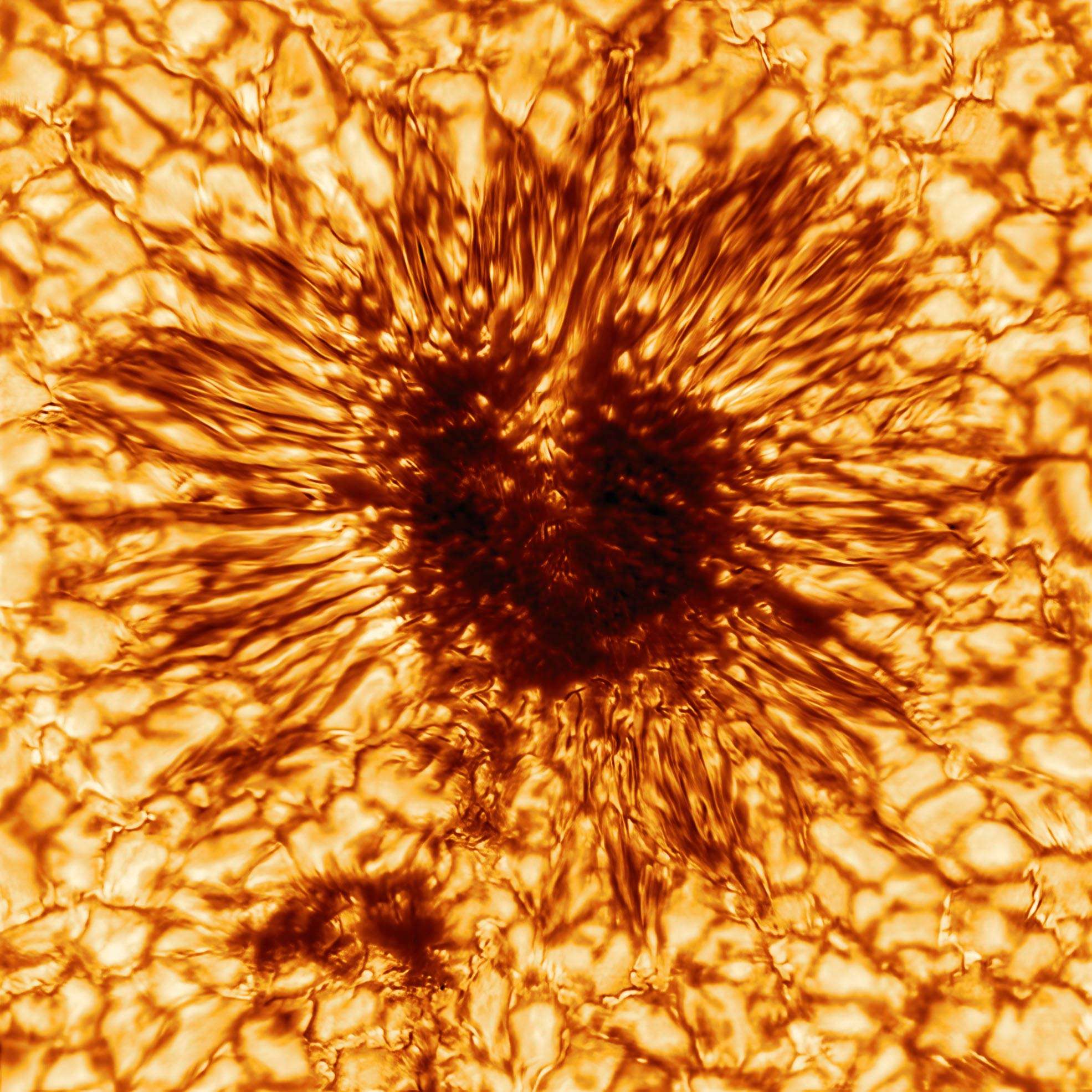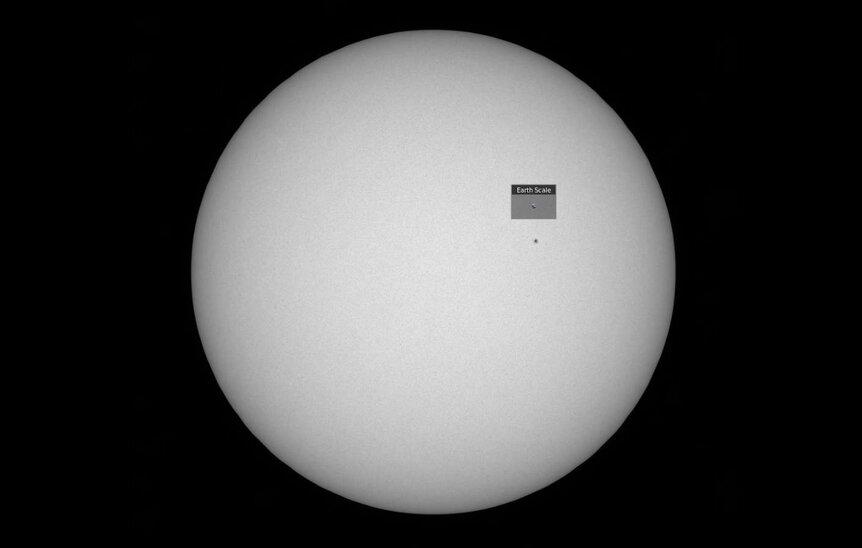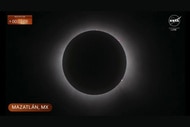Create a free profile to get unlimited access to exclusive videos, sweepstakes, and more!
A sunspot seen in jaw-dropping detail by the Daniel K. Inouye Solar Telescope

Late last year, the Sun began a new cycle of activity. It started slowly, but there were a handful of sunspots to be seen early in 2020.
Conveniently, the Daniel K. Inouye Solar Telescope (or DKIST) started operations right around that time. And when you take a 4-meter telescope on the top of the Haleakalā volcano on the island of Maui and point it at the Sun, you know you'll get amazing images of our nearest star*.
On January 28, 2020, a sunspot popped up on the solar surface, and DKIST took a look at it. To celebrate an overview paper being published about the observatory, they released an image of that sunspot that's just brain-melting:
Ye, and may I add, gads.
That image shows an area of the Sun about 16,000 kilometers on a side. For comparison the Earth is about 13,000 km across, so it would fit neatly into the image. The resolution is ridiculously phenomenal; regions as small as 20 km on a side can be seen. That's a distance you could cover on a bike in an hour or two, assuming you don't vaporize.
This image isn't a snapshot. It used what's called speckle reconstruction. Earth's atmosphere is always roiling overhead, and small parcels of air act like lenses, bending incoming light this way and that. When you take a long exposure, that movement smears out images, reducing the resolution. There are various ways to compensate for that — like adaptive optics — and DKIST does use that, but they also take lots of extremely short exposures to freeze out the air movement.
Some parts of each image are blurred, so enough images are taken that eventually you get a clean shot of every piece of the image, and then you can reconstruct the entire image from the clean exposures. This is all done automatically many times per second, and the result is that DKIST's resulting resolution is about as good as you can theoretically get from a telescope of this size.
By the way, the sunspot imaged here was not the big one we had on the Sun last week, to be clear. That one was much larger than Earth.
Sunspots have two main regions: the dark umbra, and the lighter penumbra surrounding it. You can see that in the image above pretty clearly. There's a ton of structure in both that's difficult to see in most ground-based images, so DKIST will provide solar astronomers with lots of fun sharp data to analyze.
And just in time, since the Sun is indeed ramping up activity on its surface. That comes in an 11-year cycle, with the solar magnetic field getting stronger over the next five years or so — it's predict to peak in mid-2025, and then it'll weaken again. Even in the past year the activity is noticeably higher; the big sunspot last week shows that.
I created a video showing a week of activity on the Sun around the time the January sunspot appeared, and a week centered on the big sunspot we had last week. The video uses observations from NASA's Solar Dynamics Observatory at a wavelength of 13.1 nanometers, in the ultraviolet where solar activity is easy to see.
In the first half (0-20 seconds, from January 2020) you can see a mild amount of activity, with that one spot seen by DKIST in the north being the strongest site. In the second half (20–40 seconds, from November/December 2020) the recent big spot rotates into view on the left and you can see a lot more activity, with magnetic field lines carrying hot plasma looping up and back down to the Sun's surface.
The magnetic field lines can create these sunspots — they prevent hot plasma from sinking back into the Sun, which cools it, so it appears darker — but they can also erupt and blast out their stored energy, creating flares and coronal mass ejections that can have profound effects on Earth. We need to understand these events better, and super-high-resolution images like what DKIST provides are an excellent tool for that.
I'm really looking forward to seeing what else this telescope can do. The Sun is an amazingly complex and beautiful star. I never tire of seeing it up close.
*You also generate a whole lot of heat, which takes a whole lot of clever tech to get rid of.















